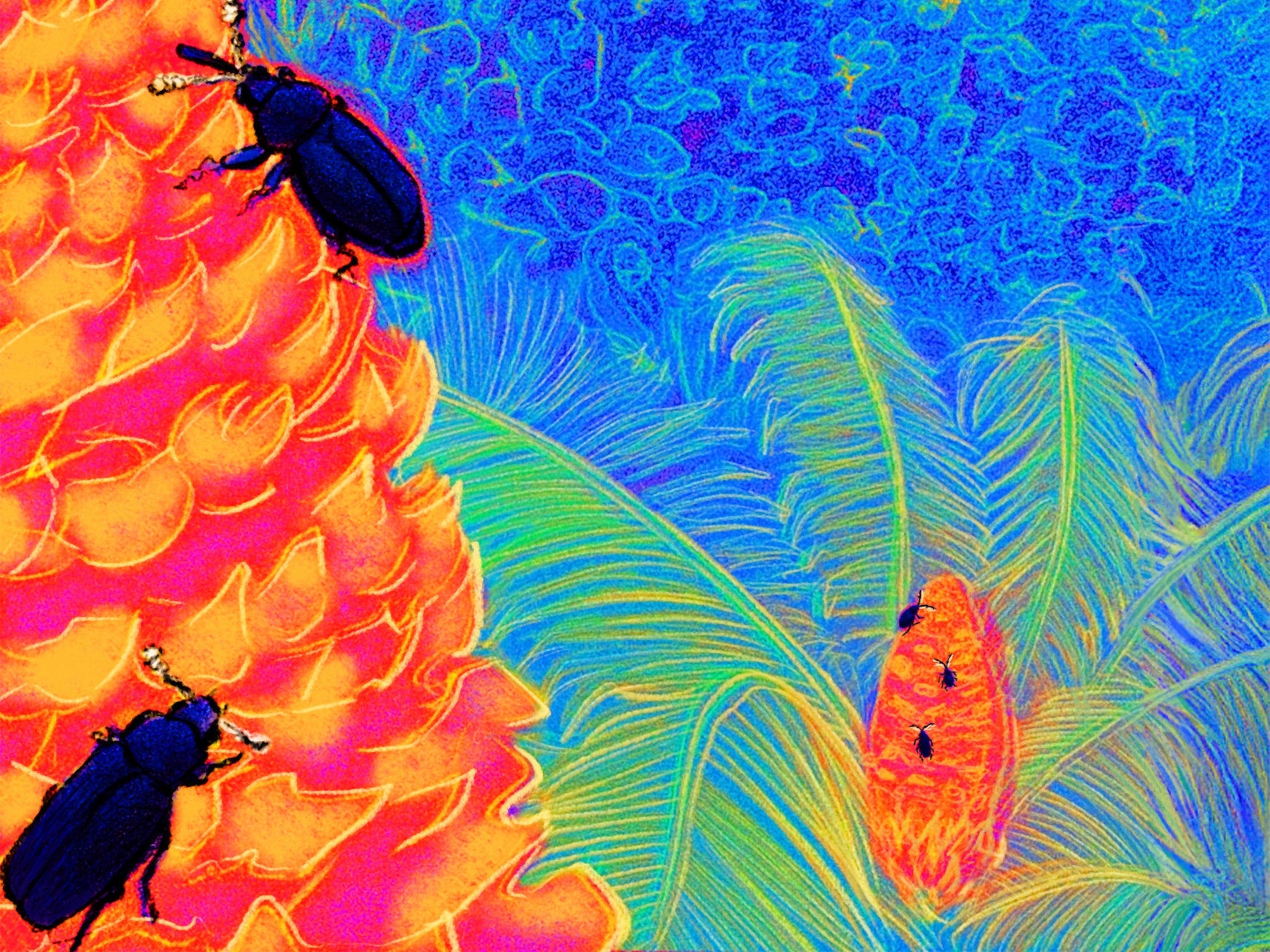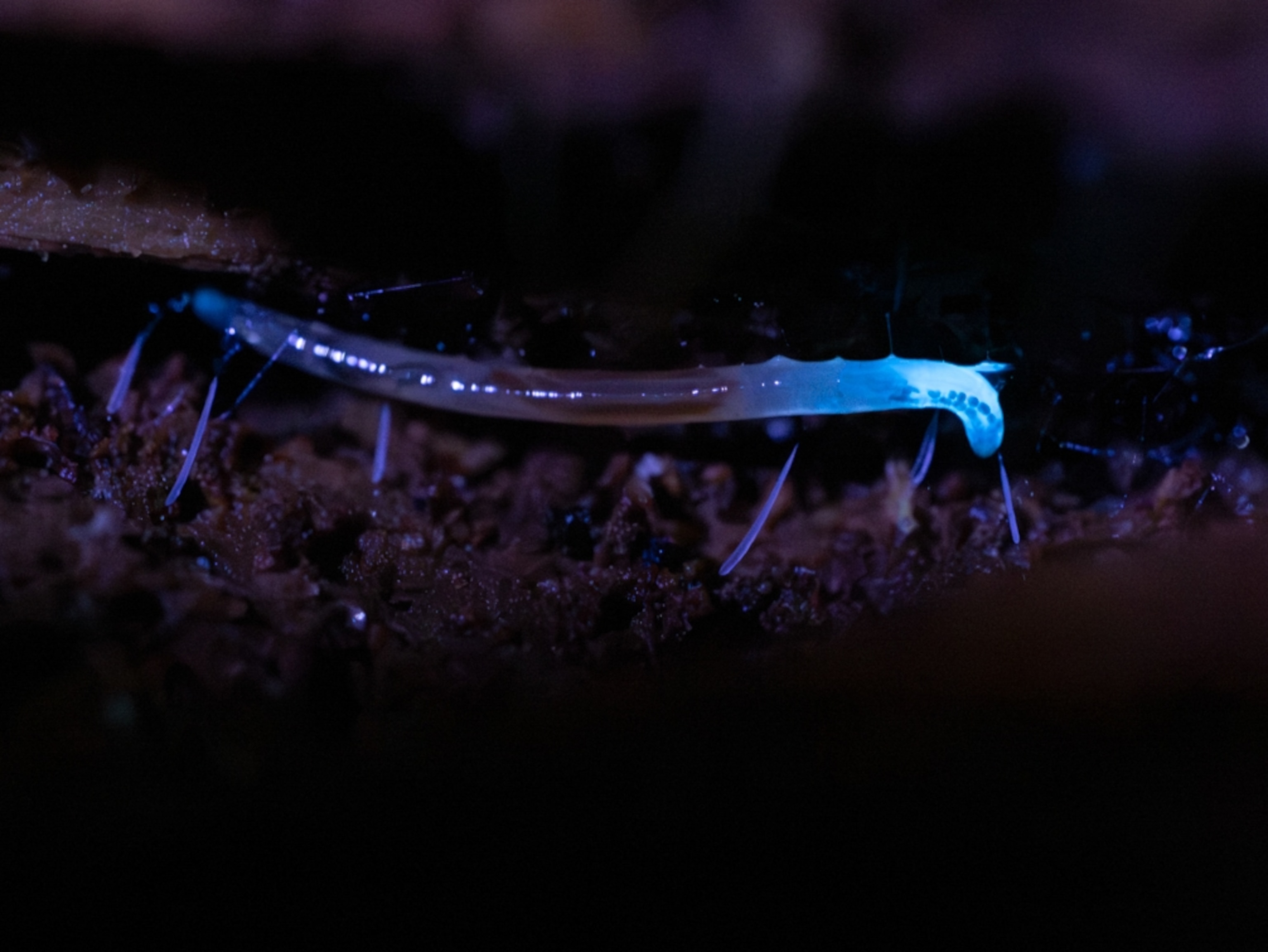
Glowing Cockroach Mimics Toxic Beetle
Roach's bioluminescence tricks predators into thinking it's distasteful.
A glowing green cockroach would seem much easier to kill than our more familiar kitchen pests, but this particular insect evolved its own set of lights to avoid exactly such predatory attention, according to a new study.
Luchihormetica luckae glows to mimic the bioluminescent click beetle, whose glow warns predators of its toxicity.
Found in rain forests around an active volcano in Ecuador, the inch-long (2.5-centimeter-long) cockroach is unique for a few reasons, scientists say.
For one thing, while many life-forms have evolved their own flashiness, most are found in the deep-sea—making bioluminescence a relatively rare trait on land. But L. luckae is particularly rare, in that it glows to mimic another insect.
Other uses of bioluminescence in the insect world, as in the case of the common firefly, are more attuned to attracting mates—lighting up to find love in the dark simply saves time.
Unfortunately, it also makes one much more visible to predators.
"Bioluminescence is like any evolutionary tool—there is no single use for it. It can attract, deter, or even be used as an invisibility cloak of sorts," said Olivia Judson, an evolutionary biologist and author of Dr. Tatiana's Sex Advice to All Creation.
Land Animals Glowed Later Than Thought?
The scientists studied an L. luckae cockroach collected in 1939 and housed at the National Museum of Natural History in Washington, D.C. The team employed new technology to scan and analyze the biological mechanism responsible for the luminescence.
They determined that the wavelengths of light released from both the click beetle and L. luckae—though developed via distinct evolutionary processes—are precisely the same.
The new research may also provide evidence for a much later evolution of land-based bioluminescence, according to the study authors.
That's because click beetles evolved their predator-deterring glow only 65 million years ago—recently compared with the 400-million-year-old development of underwater bioluminescence. (See a prehistoric time line.)
Glowing Roach a Flash in the Pan?
L. luckae could prove to be a flash in the evolutionary-science pan.
The one specimen analyzed in the study had been collected from a very specific region recently decimated by volcanic eruption. Scientists now consider the creature so rare that collecting further specimens could cause its extinction.
So chances are you won't be finding these little glowing pests raiding your cabinets.
The glowing-cockroach study appeared recently in the journal Naturwissenschaften.





